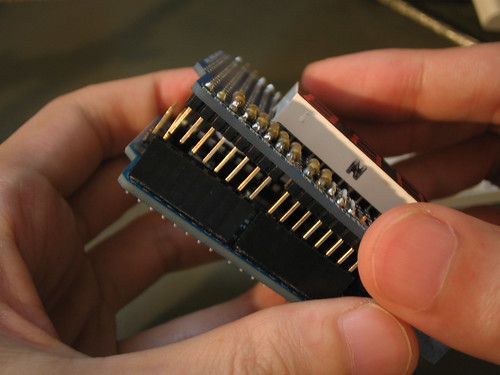
- (CC BY-NC 2.0) Some rights reserved,
- by
@ iMAL, Saturday 28.04.12 & Sunday 29.04.12
30 Quai des Charbonnages Koolmijnenkaai 30 – 1080 Bruxelles Brussel 1080
With an Arduino you can collect a lot of sensor data, from smelling gasses to measuring temperature or light and lots more. But how do you save these data? How do you actuate the outside world, transfer bits and bytes online, without using a computer?
In order to activate motors, to connect to a network, to make an autonomous interactive sound installations, you need chips and components on top of your microcontroller.
These usually come in the form of a shield that slides onto your Arduino. During this ’Ellentriek meets Code, Arts and Crafts’ weekend we’ll review several of these “shields” in detail. We will scrutinize these shields and look at the possiblities to make them ourselves.
With extra brainpower of Mr Stock from Rotterdam & Stephane Noel!
– As usual, this session is open to artists’ own projects.
– This is for people who already know how to work with Arduino
– Maximum 15 participants
– from 12 to 18h
– This workshop costs 20 euro, including a lunch with sandwiches & drinks (2 days)
– For more direct information: wendy @ constantvzw . org
This Edition of Ellentriek is a collaboration between Constant vzw, Pianofabriek kunstenwerkplaats & iMAL





